Kids First Aid Skills For Every Parent
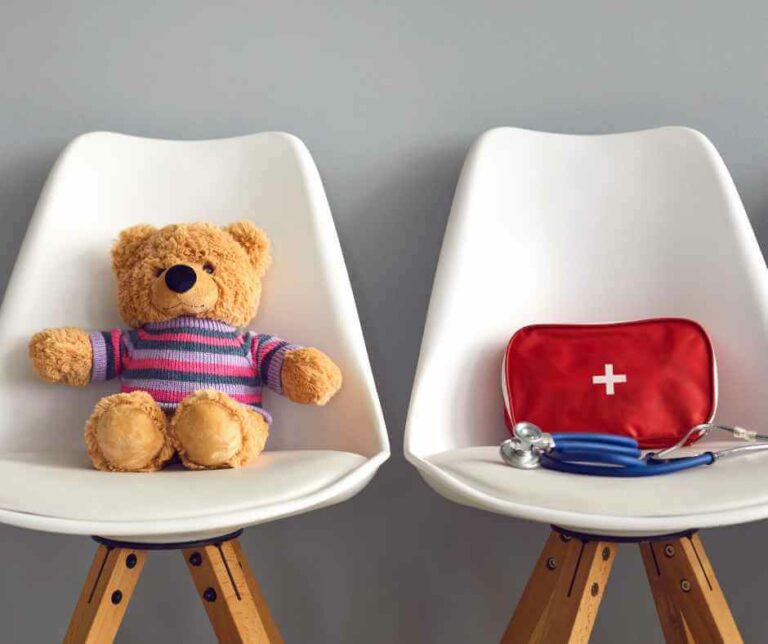
Every parent wants to be prepared in case of an emergency with their child. Luckily, there are some easy first aid skills that every parent can learn to help them feel more confident in those moments. In this article, we’ll cover some of the most essential first aid skills for parents, so you can be prepared for anything!
What is kids first aid?
Kids first aid is the initial assistance given to a baby or child who has been injured or who is in sudden cardiac arrest. It consists of a series of simple, life-saving techniques that anyone can learn and execute. First aid can be performed on both children and adults, making it an essential skill for every parent to know.
Baby and child first aid is even more important to learn, as children are not mini adults, they react differently in many situations and often need different responses in an emergency situation.
While first aid can literally mean the difference between life and death, it is also important to know when to seek medical help. Knowing when to call an ambulance or take your child to the emergency department is an important part of first aid.
If you are ever in doubt about what to do in a first aid situation, always err on the side of caution and seek medical help immediately.
What are the most important first aid skills for parents to know?
As a parent, it is essential to have a basic understanding of first aid in order to be prepared for any minor accidents or injuries that may occur. Here are some of the most important first aid skills for parents to know:
- How to properly clean and dress a wound.
- How to administer CPR to a baby under one year old and a child over one year old if necessary.
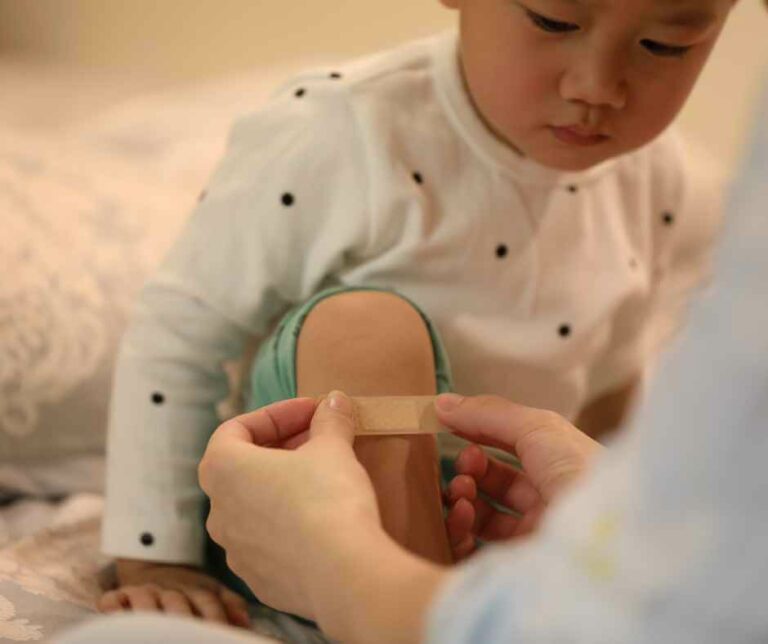
- How to identify and treat fever in young children
- How to safely give over-the-counter medication to a child.
- How to create a sling for an injured arm.
- How to treat a burn and when to seek medical attention
By learning these basic first aid skills, parents can feel confident that they are prepared to handle any minor medical emergency that may come up.
How to administer CPR to a baby or child
When it comes to administering CPR, it is important to remember that the process is different for babies and children. For a baby, you will need to use one hand to support the baby’s head and neck while using the other hand to administer CPR. For a child you may need both hands while administering CPR, depending on the child’s size and age.
It is also important to keep in mind that the compression-to-breath ratio for CPR is the same for babies and children. For a baby, child and adult you will need to perform 30 compressions followed by 2 breaths.
If you are ever in a situation where you need to administer CPR, it is important to remember these key differences. By doing so, you can be sure that you are providing the best possible care for your little one.
Is your child choking?
No one ever wants to think about their child choking, but it’s important to be prepared just in case. Here are some tips on how to deal with a choking baby or child.
First, try to remain calm. It can be difficult to think clearly when you’re panicked, so take a deep breath and try to focus.
Next, assess the situation. Is your child truly choking or is he just coughing? Coughing is actually a good thing as it helps to clear the airway.
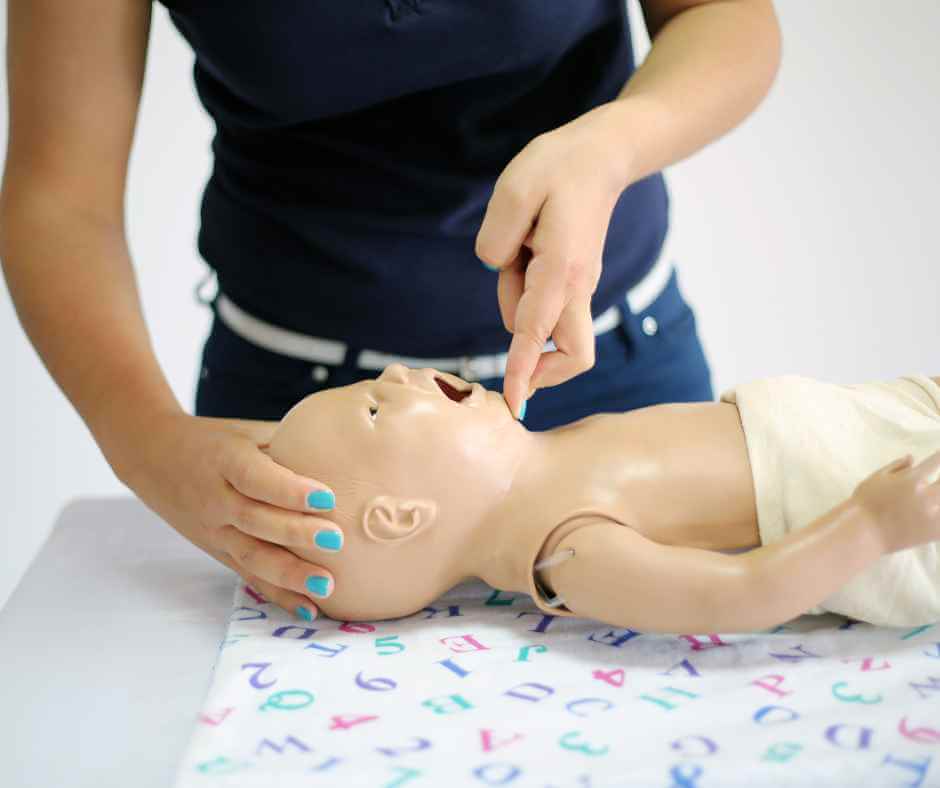
If your child is truly choking, you’ll need to act quickly. The first step is to attempt to dislodge the object that’s blocking the airway. You can do this by using the correct first aid technique of performing back blows and chest thrusts.
If you’re not sure how to do either of these things, you should attend a reputable first aid course, but until then, don’t hesitate to call emergency services for help. The operator will be able to talk you through the steps.
Choking is a scary situation but knowing what to do can help you keep calm and act quickly.
How to treat a burn in a small child
If your child has a minor burn, you can follow these first aid steps:
– Remove any clothing or jewellery from the area of the burn (but not if it is stuck to the burn)
– Cool the burn with cool water for twenty minutes.
– Apply a sterile dressing or cling film.
– Give your child paracetamol or ibuprofen for pain relief.
– Call your child’s doctor if the pain does not go away or if the burn looks infected.
Seek medical help immediately if the burn:
– Is larger than a 50c piece
– Is on their hands, feet, face or genitals
– the child is not acting normally
– the child feels no pain (they may be in shock)
How to deal with a cut or wound in a child
As a parent, it is essential to have some basic first aid skills in order to deal with common injuries and illnesses that your child may experience. One of the most common injuries that parents have to deal with is cuts and wounds.
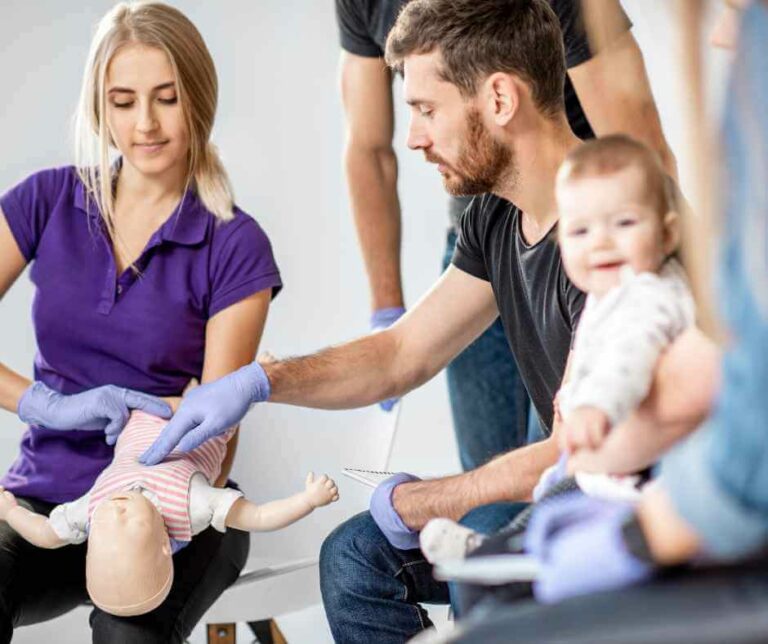
If your child has a cut or wound, the first thing you need to do is stop the bleeding by applying pressure to the area with a clean cloth. Once the bleeding has stopped, you can then proceed to clean the wound with soap and water. If the wound is more than just a superficial cut, you may need to use a non-stick dressing and antiseptic solution to clean it and prevent infection.
Once the wound is clean, you will need to apply a dressing or bandage in order to keep the area protected. Make sure to check the wound regularly and change the bandage as needed in order to keep the area clean and free from infection.
If there is extensive bleeding, pain, swelling, redness or heat, get the wound checked out straight away.
First aid for a broken bone in a small child
As a parent, it’s important to be prepared for anything. Children like to break things, even bones!
If your small child falls and breaks a bone, here’s what you need to do:
- Stay calm. It’s important to remain calm so you can think clearly and take action.
- Immobilize the injured limb. If your child has broken a bone in their arm or leg, it’s important to immobilize the limb to prevent further injury. You can do this by splinting the limb with a piece of wood or cardboard, or by using a towel or pillow to stabilize it.
- Keep your child warm and comfortable until help arrives. Once you’ve taken care of the immediate medical concerns, make sure your child is comfortable and warm until help arrives.
- If there is a stream of blood coming from the wound it is important to apply pressure and stop the bleeding.
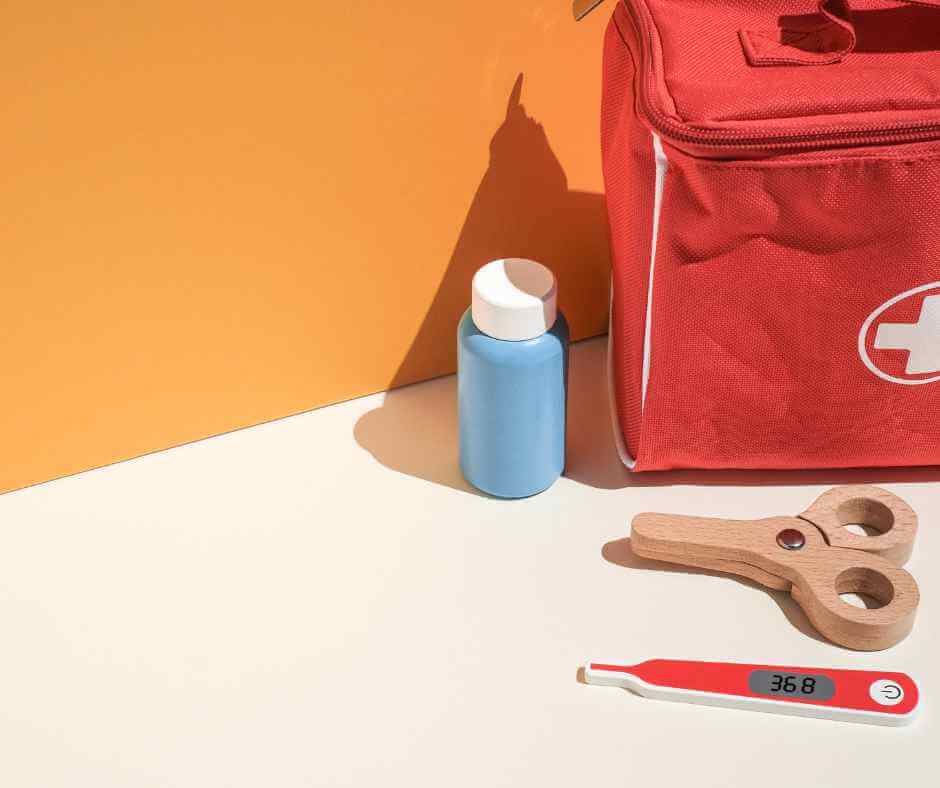
- If the child has an open fracture (Bone sticking through the skin) don’t move them, call an ambulance and keep them still and calm.
- If the child does not have an open fracture, you may be able to take them to the hospital yourself, but only if you can safely strap them into a car seat.
By following these steps, you can ensure that your child gets the treatment they need as quickly as possible
Conclusion
As a parent, it is essential that you know how to provide first aid to your child, or someone else’s, in case of an emergency. First aid skills are not only easy to learn but can also make a huge difference in a child’s life. We hope that this article has given you some valuable information on how to get started with learning essential first aid skills.
Want more? We’ve got you covered…
Our Baby First Aid Courses
Our baby first aid courses are available in person in your home and online. We run classes in your home with groups of 2, 4 or up to 10 in Sydney & Melbourne and you can book in 3 easy steps!
- Pick your class
- Follow the prompts to purchase
- We will contact you within 24 hours to lock in your date of choice
Our First Aid Certificate Courses
We run most of the popular first aid courses Australia wide. HLTAID011 Provide First Aid, HLTAID009 Provide CPR, HLTAID012 Provide First Aid in an Education & Care Setting, RAMOAP (anaphylaxis), Mental Health first aid and CPR/LVR to name a few.
Book your public spot online or contact us if you have a group of 5+ people for onsite training.
Here are some other resources you may enjoy!
FREE GUIDE: Your Virtual Baby First Aid Kit
FREE GUIDE: Introducing Common Allergy Foods & Allergic Reactions
FREE Workplace Emergency Preparedness Plan: Grab this at the bottom of every page!
Follow for baby & child first aid and allergy info and tips on Instagram & TikTok, all @thenestcpr
